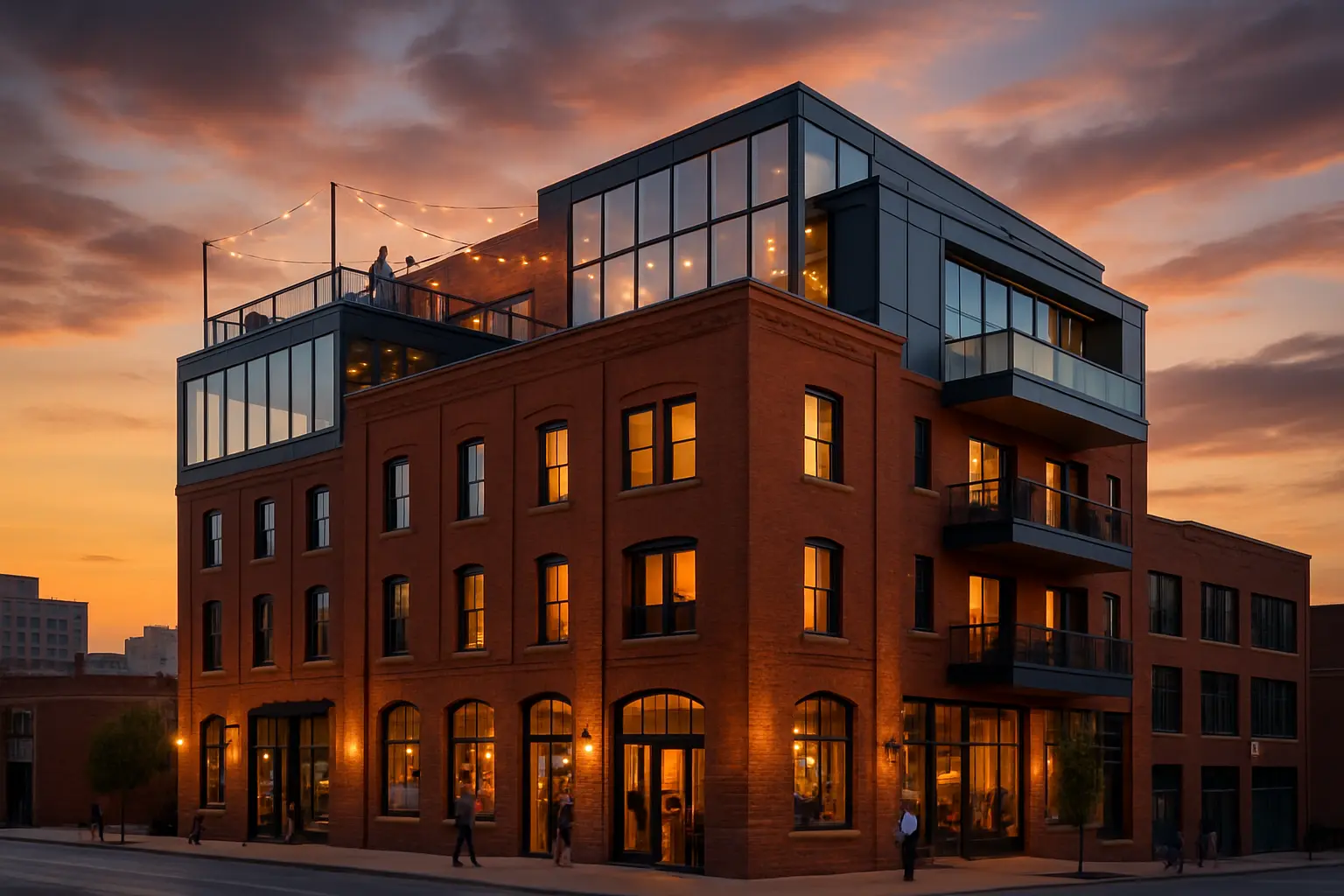From Industrial to Innovative: Kansas City's Mixed-Use Property Revolution
Discover how KC's transformed warehouses and historic buildings are creating lucrative opportunities for investors and business owners alike.

The Rise of Mixed-Use Developments in Kansas City's Urban Core
Kansas City's urban landscape is undergoing a remarkable transformation as former industrial spaces and warehouses are being reimagined into vibrant mixed-use developments. This architectural renaissance is breathing new life into historic structures while creating dynamic spaces that cater to modern lifestyle demands.
The city's industrial heritage, characterized by sturdy brick warehouses and manufacturing facilities, provides the perfect canvas for innovative redevelopment. These structures, with their high ceilings, large windows, and robust architecture, are being artfully converted into spaces that seamlessly blend residential, commercial, and recreational uses.
Success Stories: Notable Mixed-Use Projects
Several standout projects exemplify the successful transformation of Kansas City's industrial spaces:
- The Crossroads Arts District: Once a collection of abandoned warehouses, now a thriving hub of galleries, tech startups, luxury apartments, and artisanal dining establishments.
- West Bottoms Revitalization: Historic industrial buildings transformed into unique retail spaces, creative offices, and modern loft apartments while maintaining their architectural character.
- River Market Evolution: Former storage facilities converted into mixed-use developments featuring ground-floor markets, boutique offices, and residential units with stunning downtown views.
Market Analysis: Understanding the Growing Demand
The surge in mixed-use development popularity is driven by several key factors:
- Demographic Shifts: Young professionals and empty nesters seeking walkable, amenity-rich environments
- Sustainability Focus: Increased emphasis on adaptive reuse and reduced carbon footprint
- Work-Life Integration: Growing preference for environments that seamlessly blend professional and personal spaces
Market studies indicate that mixed-use properties in Kansas City are experiencing occupancy rates above 90%, with consistent rental growth outpacing traditional single-use developments.
Investment Strategies: Key Considerations
For investors looking to capitalize on Kansas City's mixed-use revolution, several strategic considerations are essential:
Location Assessment
- Proximity to public transportation and major employment centers
- Neighborhood growth potential and existing amenities
- Historical significance and architectural value
Development Approach
- Balance between preservation and modern amenities
- Optimal mix of residential, retail, and office spaces
- Incorporation of community-focused amenities
Financial Planning
- Understanding of historic tax credits and incentive programs
- Long-term maintenance and renovation considerations
- Market-appropriate pricing strategies
The transformation of Kansas City's industrial spaces into mixed-use developments represents more than just a real estate trend – it's a fundamental shift in how urban spaces are being reimagined for the future. For investors and developers who understand this evolution, the opportunities for creating value while preserving the city's rich architectural heritage are substantial.


